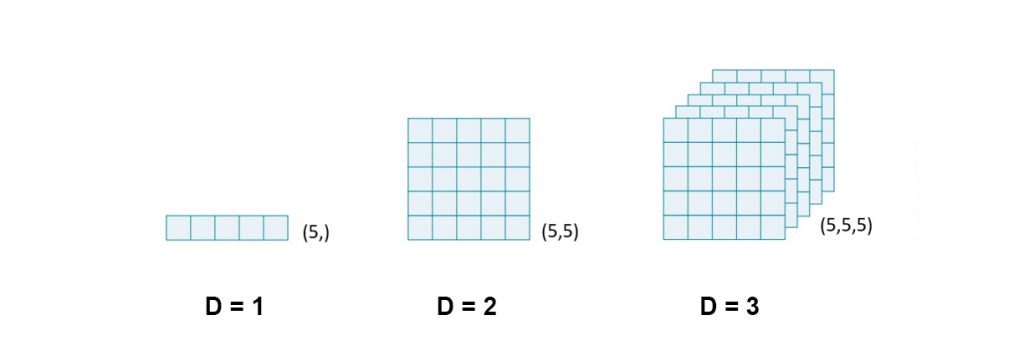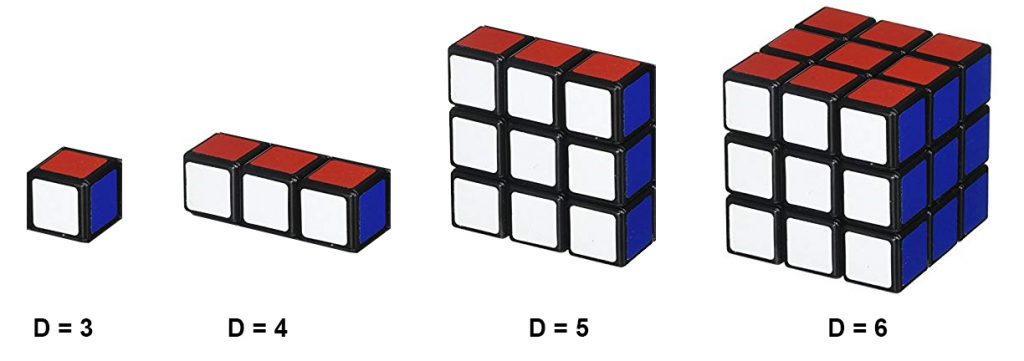During the second year of my PhD project (Fast simulation-assisted shape correction after machining) we implemented a multiparametric study of a plastic bending operation. To perform this task, a Reduced Order Model (ROM) technique called Sparse Subspace Learning (SSL) was used [1]. For this type of studies, each parameter is considered as a dimension and it is required to use a ROM to overcome the “curse of dimensionality”. At the moment, we have already implemented the model with 4 parameters, therefore, we are working in a 4-dimensional space.
To read or represent data in 1 or 2 dimensions is something common. However, when we jump into the 3rd dimension is when things start to be “fun”. Here, we still can open a matrix and directly visualize data located at its respective row, column, and depth. Then, we can see that a matrix with 3 dimensions can be considered as a “cube” where data is stored in different internal 2D layers. A representation of a matrix from 1 to 3 dimensions can be found in Figure 1.
The next mental challenge takes place when we start flirting with the 4th dimension. Now, we can not open directly a matrix and swipe our eyes around data. Indeed, we need to particularize one of the dimensions in order to select a subset in a lower dimensional space to explore it.
At this point, I was confused and asked to myself the following question: “If we can not see data in high-dimensions, there is a way to imagine and understand how data is stored?”. To answer my question, it took me a while to understand that the issue of adding extra dimensions follows the same pattern as a “Rubik Cube”. Coming back to the idea that a 3D matrix has the shape of a cube, if the 4th dimension is added, the 3D data should be stored in a row. Then, to represent the 5th dimension, new columns are required and so on. In that way, the full Rubik Cube is obtained when we work in a 6-dimensional space. This idea is represented in Figure 2.
Now that we know how data is stored in high-dimensional spaces, it is time to play with them as we play with a Rubik Cube, or as Marie Curie already said “Nothing in life is to be feared. It is only to be understood”.


References:
[1] D. Borzacchiello, JV. Aguado, F. Chinesta, Non-intrusive Sparse Subspace Learning for Parametrized Problems, Archives of Computational Methods in Engineering (2017), 1-24
